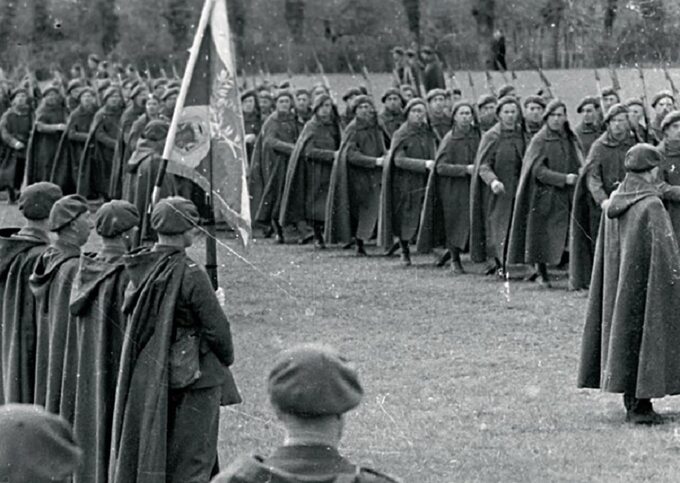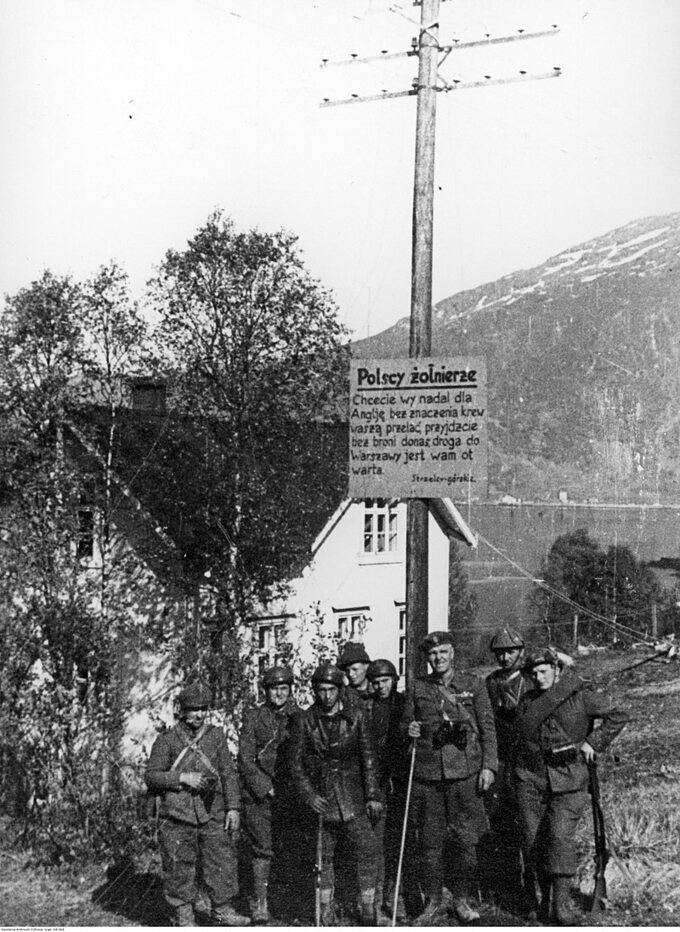The Independent Podale Rifle Brigade is best known for its participation in the Battle of Narvik. The decision to create the SBSP was made on 15 January 1940, and the order was issued three weeks later on 9 February. The brigade was headed by General Zygmunt Bohush-Szyszko. The formation lasted a short time. Who was guilty?
Independent Podale Rifle Brigade – institution
The history of the Independent Podale Rifle Brigade is not long, but this unit has become a permanent part of the history of the Second World War. The concept of creating an independent Podale rifle brigade probably appeared at the end of 1939. Initially, the Allies wanted the Poles to form a unit that would be transferred to Finland, where the Winter War was being fought between Finland and the Soviet Union.
The Poles fighting on the side of the Finns against the Soviet troops may seem a little strange because – remember – neither Great Britain nor France declared war on the Soviet Union when they invaded Poland in September 1939, nor did the Red Army. On November 30 of the same year, he entered the armed forces on the territory of Finland. Although the Allies quietly supported the Finns, they did not want to openly participate in the battle. Therefore, according to London or Paris, sending the Poles to the Finnish front made a lot of sense – the Poles were, de facto, at war with the Soviet Union and their country was occupied. Therefore, Poland could help Finland with its soldiers.
The decision to create an independent Podale rifle brigade was made on January 15, 1940. On February 9, relevant decrees were issued in this regard. Even earlier, on January 4, the French, in whose territory the unit was established, promised to provide supplies and respect the autonomy of the brigade, which at the same time was subordinate to the Allied commanders.

The French authorities discussed sending an independent Podale Rifle Brigade to Finland with the Commander-in-Chief, General Władysław Sikorski, and the Government of the Republic of Poland in France. Polish politicians and military officers supported the idea of transferring the brigade to Scandinavia, where the formation would have the opportunity to fight Poland's second enemy, after the Germans.
On February 20, 1940, due to the deterioration of the situation of the Finns on the front of the Winter War, the SBSP was created at an accelerated pace. On February 20, the Independent Podale Rifle Brigade assembled at the Coetquidan camp in France for training. The soldiers were uniformed and armed. The brigade was created on the example of pre-war Polish mining units and French Alpine units.
However, the independent Podale rifle brigade did not eventually go to Finland. The Winter War ended with an armistice signed on March 13, 1940. The people under the command of General Zygmunt Bohusch-Szyszko remained in France, where they received further training and courses: in Malestroit, Rochefort-en-Terre and Ploermel. The training itself left much to be desired. Although the Poles appealed to the French command to transfer them to the Alpine region, where they would have more favorable conditions for training, this request was refused. The soldiers themselves later learned that they were not trained enough to fight in the mountains (eg there was no training for skiers).
The Independent Podale Rifle Brigade completed its training in April 1940. Then a decision was made to send him to the front. The target was Norway, whose Allies were very afraid of being captured by the Germans (Norway, among other things, had rich oil deposits, and Narvik was an ice-cold port).
On April 10, the soldiers took the oath and presented the banner. The ceremony was attended by the President of the Republic of Poland, Władysław Rachkiewicz, and the Commander-in-Chief, General Sikorski.
Battle of Narvik
The Independent Podale Rifle Brigade left France on April 24, 1940. On May 8, Polish soldiers landed in Norway.
At that time, the Germans had already occupied the northern part of Norway, including the Narvik area. General Dietl's German 3rd Mountain Division operated in this area, and on the Allied side the 24th Welsh Guards Brigade and General Marie Emilie Bétuart's 1st Light Rifle Division (these troops formed the Northwest Expeditionary Corps). The Poles became the second part of the mentioned formations.

Just two days later, on May 10, news of a German attack on the Netherlands reached Norway. The situation became increasingly difficult for the Allies.
On May 12, the Allies successfully attacked Bjerkvik, from where they were to attack Narvik. The Battle of Narvik began on the night of May 27-28, 1940. The Poles were an important part of the forces that led the attack. On 29 May, the independent Podale rifle brigade captured Baysfjord, and shortly afterwards Nyborg, paving the way for the capture of Narvik. During the fighting, the Poles lost 97 people and 189 were wounded.
Further fate of SBSP and Bohusz-Szyszko
Due to the worsening situation in France, the Allies decided to evacuate the North-West Expeditionary Force. On June 15, 1940, the independent Podale Rifle Brigade went into battle on French soil.
Unfortunately, the Polish formation was completely unprepared for this battle. The French made a big mistake when they ordered the Poles to go into battle without proper training and, above all, proper weapons. The German armor was well equipped and easily won the ensuing engagements. The independent Podale Rifle Brigade was annihilated, but General Bohush-Szyszko did everything he could to save his men. In the end, as a result of the uncompromising attitude of the French, who ordered the Poles to defend their designated positions at any cost (even without sending ammunition), only 600 of the entire brigade, initially more than 4.7 thousand people, survived. France. Many were killed, most were captured by the Germans.

600 soldiers, the remnants of the Independent Podale Rifle Brigade, arrived in Great Britain on 18 June, where they sought to join the re-established Polish armed forces on the islands. Some of the SBSP soldiers formed the Podale Rifle Battalion, which was transferred to Scotland. It was commanded by Colonel Benedikt Chlusevich.
In mid-July, General Sikorsky was officially informed about the destruction of the Podale rifle brigade. Major Novinsky (Head of the 2nd Information and Intelligence Department of the SBSP) wrote to Major Dek (Commander of the 2nd Battalion): “By order of Colonel Chlusevich, I hasten to inform you that yesterday evening our brigade ceased to exist and joined the so-called battalion General Macek's brigade (…) we have nothing left. In a deeply elaborate apology, there was not even a word to mention General Bohus.
*
General Zygmunt Bohusz-Szyszko (1893-1982) headed the Polish military mission to the USSR in August 1941 after the signing of the Sikorsky-Maisk Agreement. From December 1941, he formed the 7th Infantry Division, and from March to October 1942, he was the Chief of Staff of the Polish Army in the Soviet Union. After the evacuation of Polish troops from the USSR, he took command of the 5th Kresowa Infantry Division, and in June 1943 he was appointed deputy commander of the Polish II Corps. Together with the II Corps, he went through the entire combat path of Italy. In April 1945, he fought in the victorious Battle of Bologna. After the end of the war, Bohush-Shishko moved to London. He was active in the veterans community, served in the Polish Training and Deployment Corps, and was also the Inspector General of the Armed Forces. He earned his living by publishing articles and historical works and restoring and repairing old porcelain.
Zygmunt Bohus-Szyszko died on June 20, 1982 in London. He was buried at Povasky Military Cemetery.
Also read:
Heavy water fight. How the Germans tried to get nuclear weaponsAlso read:
Stanislav Macek. The legend of FalesAlso read:
battle of britain How Goring was humiliated by the Allies
